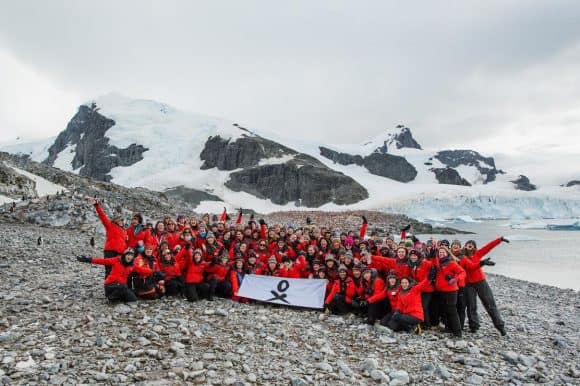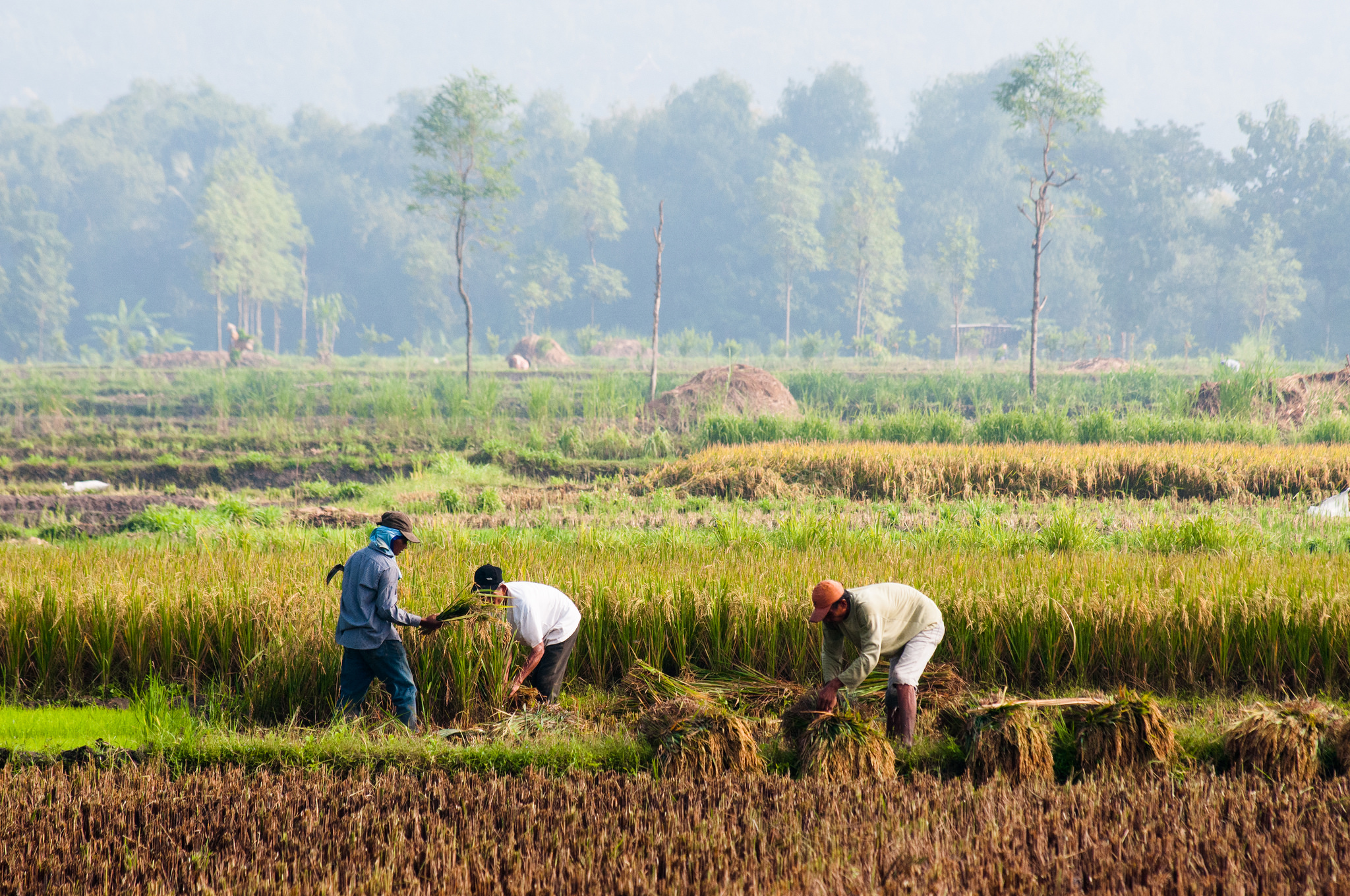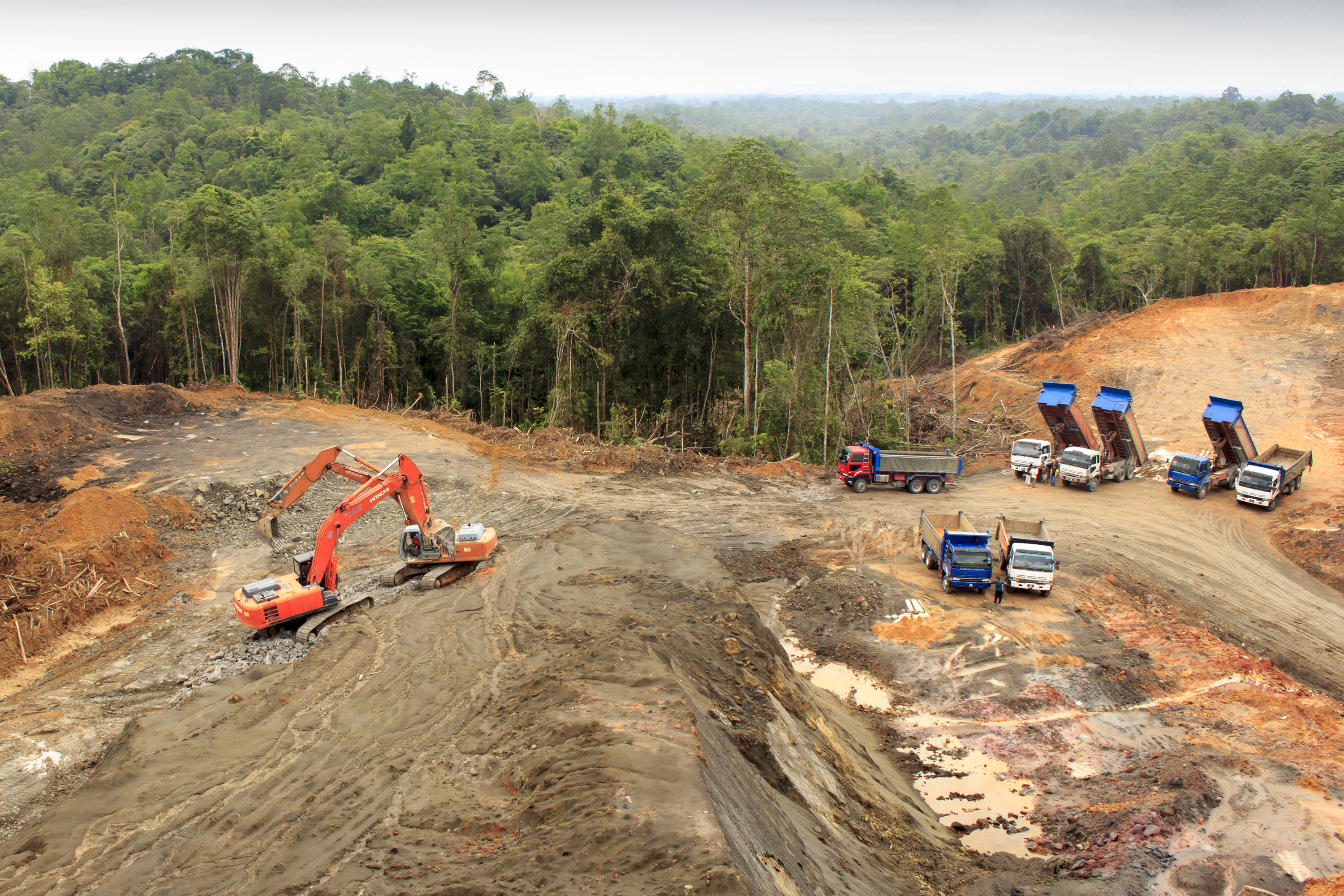Oct 5, 2018 | Climate, Climate Change, Ecosystems, Environment, Food, Food & Water, History, Young Scientists

© Marcus Thomson
By Marcus Thomson, researcher, IIASA Ecosystems Services and Management Program
While living in Cairo in 2010, I witnessed first-hand the human toll of political and environmental disasters that washed over Africa at the end of the last century. Unprecedented numbers of migrants were pressing into North Africa, many pushed out of their homelands by conflict and state-failure, pulled towards safer, richer, less fragile places like Europe. Throughout Sub-Saharan Africa, climate change was driving up competition for scarce land and water, and raising pressure on farmers to maintain the quantity and quality of their crops.
It is a similar story throughout the developing world, where many farmers do without the use of expensive chemical fertilizer and pesticides, complex irrigation, or boutique seed varieties. They rely instead on traditional land management practices that developed over long periods with consistent, predictable conditions. It is difficult to predict how dryland farmers will respond to climate change; so it is challenging to plan for various social, economic, and political problems expected to develop under, or be exacerbated by, climate change. Will it spur innovation or, as has been argued for the Syrian civil war[1], set up conflict? A major stumbling block is that the dynamics of human social behavior are so difficult to model.
Instead of attempting to predict farmers’ responses to climate change by modelling human behavior, we can look to the responses to environmental changes of farmers from the past as analogues for many subsistence farmers of the future. Methods to fill in historical gaps, and reconstruct the prehistoric record, are valuable because they expand the set of observed cases of societal-scale responses to environmental change. For instance, some 2000 years ago, an expansive maize-growing cultural complex, the Ancestral Puebloans (APs), was well established in the arid American Southwest. By AD 1000, members of this AP complex produced unique and innovative material culture including the famed “Great Houses”, the largest built structures in the United States until the 19th century. However, between AD 1150 and 1350, there was a profound demographic transformation throughout the Southwest linked to climate change. We now know that many APs migrated elsewhere. As a PhD student at the University of California, Los Angeles, I wondered whether a shift to cooler, more variable conditions of the “Little Ice Age” (LIA, roughly AD 1300 to 1850) was linked to the production of their staple crop, maize.
I came to IIASA as a YSSP in 2016 to collaborate with crop modelers on this question, and our work has just been published in the journal Quaternary International.[2] I brought with me high-resolution data from a state-of-the-art climate model to drive the crop simulations, and AP site information collected by archaeologists. Because AP maize was quite different from modern corn, I worked with IIASA soil scientist Juraj Balkovič to modify the crop simulator with parameters derived from heirloom varieties still grown by indigenous peoples in the Southwest. I and IIASA economic geographer Tamás Krisztin developed a statistical technique to analyze the dynamical relationship between AP site occupation and simulated yield outcomes.
We found that for the most climate-stressed high-elevation sites, abandonments were most associated with increased year-to-year yield variability; and for the least stressed low-elevation and well-watered sites, abandonment was more likely due to endogenous stressors, such as soil degradation and population pressure. Crucially, we found that across all regions, populations peaked during periods of the most stable year-to-year crop yields, even though these were also relatively warm and dry periods. In short, we found that AP maize farmers adapted well to gradually rising temperatures and drought, during the MCA, but failed to adapt to increased climate variability after ~AD 1150, during the LIA. Because increased variability is one of the near certainties for dryland farming zones under global warming, the AP experience offers a cautionary example of the limits of low-technology adaptation to climate change, a business-as-usual direction for many sub-Saharan dryland farmers.
This is a lesson from the past that policymakers might take note of.
[1] Kelley, C. P., Mohtadi, S., Cane, M. A., Seager, R., & Kushnir, Y. (2015). Climate change in the Fertile Crescent and implications of the recent Syrian drought. Proceedings of the National Academy of Sciences, 201421533.
[2] Thomson, M. J., Balkovič, J., Krisztin, T., MacDonald, G. M. (2018). Simulated crop yield for Zea mays for Fremont Ancestral Puebloan sites in Utah between 850-1499 CE based on temperature dailies from a statistically downscaled climate model. Quaternary International. https://doi.org/10.1016/j.quaint.2018.09.031
Jul 5, 2018 | Climate Change, Ecosystems, Environment
By Anatoly Shvidenko, senior researcher in the IIASA Ecosystems Services and Management Program
The forest region known as the circumpolar boreal belt comprises almost a third of the global forest area and about a fourth of the world’s wetlands. There are substantive structural, ecological and management similarities and connections between boreal and global mountain forests of high elevation. Specific features of both boreal and high-elevation forests – or as we started calling them cool forests – include evolutionary adjustments to cold climates; dominance of coniferous species; permafrost over huge territories; vulnerability to climate anomalies and ecological disturbances; large remote and practically unmanaged territories; and lack of infrastructure over vast areas. Under climate change, these landscapes are on the one hand exposed to extreme pressures and risks and on the other, they are decisive for our efforts to reach the climate goals. These cool forests could substantially help to cool down the climate. This is why I became a Cool Forest Ambassador.

© RikoBest | Shutterstock
A particular threat to global climate mitigation efforts is the thawing permafrost, which contains about 1,000 billion tons of carbon as methane and hydrates in the frozen grounds of the Northern Eurasian high latitudes alone. Furthermore, a number of models predict forest deaths over large areas, loss of biodiversity, and negative impacts on social hotspots in the highly populated southern (mid-latitude) ecotone of the boreal zone.
Since the most critical climate change on the planet is expected in continental regions of the boreal and mountainous regions, these forest and wetland landscapes require specific societal, scientific, and managerial attention. The current paradigm of co-evolution of people and forests calls for a transition to adaptive and risk-resilient sustainable forest management (ASFM), which is a complicated task, both mentally and professionally.
Diversity of forests, ownership, socioeconomic conditions, forest management practices, and policies for cool forests are extensive, as are the above-mentioned associated risks. Large differences prevail in stakeholder preferences, understanding, and the valuation of ecosystem services, as well as in understanding relevant strategies of implementing ASFM. We need to advocate the investigation of socioecological drivers that define current and future states, the resilience and vulnerability of forests, as well as the stability of forests and agro-forest landscapes. Moreover, we need to consider the close connection of cool forests with the specifics of surrounding landscapes within the paradigm of the multi-functional use of forests.

© IBFRA
About 20 countries have cool forests, but three of them comprise almost 90% of the total area: Russia 56%, Canada 27%, and the USA 6%. The starting point, preparedness, and capacity of these countries to introduce ASFM are substantially different, but the majority of them are lagging behind in terms of real progress in the proper direction. Cross-border analysis of national specifics and commonalities are needed to understand the potential and challenges of ASFM, as well as to identify problems that cannot be completely resolved by means of ASFM alone (e.g., slowdown of permafrost thaw). There is no silver bullet strategy that would allow us to reach all the goals of ASFM. The high uncertainty of climatic predictions and lack of knowledge on the behavior of boreal and high-elevation forests under new environmental conditions, require new operative information, as well as a new philosophy and management tools. In particular, new types of models are needed to present sufficient information for decision making within regional forest management systems. The IIASA Ecosystem Services and Management Program has intensively studied cool forests for the last three decades (large international projects included SIBERIA-II, Siberia-II, the Third Millennium Ecosystem Assessment etc.).
All pressing problems, hot topics, and required actions related to cool forests will be discussed at the 18th Conference of the International Boreal Forest Research Association “Cool forests at risk? The critical role of boreal and mountain ecosystems for people, bioeconomy, and climate”, taking place at IIASA from 17 to 20 September 2018. More information about this event is available on the conference website (IBFRA18.org). We invite scientists and stakeholders from policy, business, and civil society and all who are interested in the topic, to express their opinion about the most important and urgent actions that should be realized. Join me in signing-up as a Cool Forest Ambassador to bring this globally important problem to the attention of societies and governing circles globally.
Note: This article gives the views of the authors, and not the position of the Nexus blog, nor of the International Institute for Applied Systems Analysis.
Jun 18, 2018 | Alumni, Ecosystems, Environment, Women in Science, Young Scientists
By Cecile Godde, PhD student at the University of Queensland, Australia and former IIASA YSSP participant

Cecile Godde ©Oli Sansom
Last year, I had the fantastic opportunity to spend three months at IIASA as part of the Young Scientists Summer Program (YSSP), to collaborate with the Ecosystems Services and Management (ESM) research program. During this very enriching experience, both intellectually, socially, and culturally, I worked with Petr Havlik, David Leclère, and Christian Folberth on modeling global rangelands and pasturelands under farming and climate scenarios. I also progressed on the development of a global animal stocking rate optimizer. The overall objective of this YSSP project, and more broadly of my PhD, is to assess the role of grazing systems in a sustainable food system.
However, my trip to IIASA was not my only adventure last year. Just before moving to Vienna, I received the great news that I was selected along with 77 other women to take part in a women in science and leadership program called Homeward Bound.
What would our world look like if women and men were equally represented, respected, and valued at the leadership table? How might we manage our resources and our communities differently? How might we coordinate our response to global problems like food security and climate change?
Homeward Bound is a worldwide and world-class initiative that seeks to support and encourage women with scientific backgrounds into leadership roles, believing that diversity in leadership is key to addressing these complex and far-reaching issues. The program’s bold mission is to create a 1000-strong collective of women in science around the world over the next 10 years, with the enhanced leadership, strategic, and visibility capacity to influence policy and decision making for the benefit of the planet.

Antarctic penguins © Cecile Godde
This year-long program culminated in an intensive three-week training course in Antarctica, a journey from which I have just come back. The voyage to Antarctica was incredible. We learnt intensively during this 24/7 floating conference in the midst of majestic icebergs, very cute penguins, graceful whales, and extraordinary women from various cultures and backgrounds, from PhD students to Nobel Laureates. I have returned full of hope for the planet, deeply inspired, and emotionally energized. It was a truly unforgettable experience, one that will keep me reflecting for a lifetime.
Our days in Antarctica typically followed a similar routine – half of the day was dedicated to a landing (we visited Argentinian, Chinese, US, and UK research stations) and the other half to classes and workshops. We discussed systemic gender issues and learnt about leadership styles, peer-coaching, the art of providing feedback, science communication, core personal values, or what matter to us. The list goes on! We were also encouraged to practice reflective journaling. Regularly recording activities, situations, and thoughts on paper is actually a very powerful technique for self-discovery and personal and professional growth as it helps us think in a critical and analytical way about our behaviors, values, and emotions. We also spent quite some time developing our personal and professional strategies: What is our purpose as individuals? What are our core values, aspirations, and short- and long-term goals? From that, we developed a roadmap that could be executed as soon as we stepped off the ship. While I haven’t solved all my life’s mysteries, this activity gave me strong foundations to keep growing and actively shape my own life, rather than letting society do it for me.
In the evenings, we watched our film faculty sharing their tips with us on television, including primatologist Jane Goodall, world leading marine biologist Sylvia Earle, and former Executive Secretary of the UN Framework Convention on Climate Change (UNFCC), Christiana Figueres. We also had a collective art project called “Confluence: A Journey Homeward Bound”, which was underpinned by our inner journey of reflection, growth, and transformation and our outer physical journey to Antarctica.

Homeward Bound in Antarctica © Oli Sansom
Both my stay at IIASA and my journey to Antarctica taught me a lot about the value of getting out of my comfort zone, exploring different leadership styles, and collaborating. I have also witnessed how visibility (visibility to ourselves, to understand who we are, and visibility to others, to let the world know we exist) helps to open up opportunities. The good news is that the beliefs we have about ourselves are just that – beliefs – and these beliefs can be changed.
My visibility to others has also increased notably in relation to my involvement in Homeward Bound and my recent award of the Queensland Women in STEM prize. This Australian annual prize, awarded by the Minister for Environment and Science, Leeanne Enoch and Acting Chief Scientist Dr Christine Williams, aims to celebrate the achievements of women who are making a difference in the fields of science, technology, engineering, and mathematics. As a result, I have been contacted by fascinating people from various fields of work, from researchers and teachers to entrepreneurs, start-ups, and industries. All these connections have broadened my approach to food security and global change and helped me shape my research vision, purpose, and values.
When we were in Antarctica, our story reached 750 million people. Why? Because, and may we never forget, the world believes in us – ‘us’ in its broadest sense: humans, scientists, women, etc. – in our skill, compassion, and capability. While we are facing alarming global social, economic, and environmental challenges, I believe that the many collaborations that embrace diversity of knowledge, skills, processes, and leadership styles that are currently emerging all around the world, will help us get closer to our development goals.
Homeward Bound is a 10-year long initiative. Find out more about the program and how to apply here: http://homewardboundprojects.com.au
Follow my journey: –
Mar 21, 2018 | Citizen Science, Environment
By Linda See and Inian Moorthy, Ecosystems Services and Management Program
A recent estimate indicates that there are around 3 trillion trees on the Earth’s surface, of which around 15 billion are cut down each year [1]. When we think of these vast numbers, we usually picture Amazonian rainforests or landscapes of evergreen trees surrounded by lakes and mountains. We rarely think of urban trees and the important role they play in making cities a healthier, greener place to live.

©Durch pecaphoto77 | Shutterstock
Raising awareness of the importance of urban forests for quality of life is part of the theme of this year’s United Nations International Day of Forests. At IIASA we are actively contributing to this awareness through an EU-funded project called LandSense. The aim of the project is to create a citizen-powered observatory for environmental monitoring of landscapes, particularly those that are changing and affecting citizen wellbeing, livelihoods, and biodiversity. Monitoring trees, and more specifically urban greenspaces, is a fundamental component of the LandSense project. Trees can reduce air pollution in cities by absorbing and filtering out the gases and particles that cause harm. Additionally, trees have a cooling effect on cities, which is increasingly important as temperatures rise due to climate change. In cities, the urban heat island effect results in higher temperatures during heat waves, often leading to health problems and even fatalities. Monitoring the presence of urban trees and fostering citizen access to urban greenspaces should therefore not be underestimated in terms of their contribution to promoting urban health, wellbeing, and sustainable cities.
With this urban focus in mind, the LandSense citizen observatory is engaging citizens in Vienna and Amsterdam in monitoring their local greenspaces, and in this way obtaining their perceptions about the quality and extent of these areas. A smart phone app developed at IIASA, guides participating citizens to specific locations in the city and asks them a series of questions, some of which relate to the quality of the trees in their area. This feedback can help city authorities to better understand the views of their citizens. The ultimate goal is to create dynamic and temporal maps of greenspace quality across the city, which can guide timely local decision making. The LandSense app will for example, directly contribute to STEP 2025, the urban development plan for Vienna.
This participatory approach not only gives citizens a better understanding of changing greenspaces in the city, but also empowers them to elicit action from city authorities in terms of improving poorly perceived greenspaces. By participating in this process, citizens are actively engaging in dialogue with the city authorities – getting their voices heard and influencing where future improvements will take place. Ultimately, by improving greenspaces and urban forests, citizens are helping to increase the wellbeing and quality of life of urban dwellers in the city.
We are currently testing the mobile app with students in Vienna and Amsterdam before launching broader citizen-based greenspace monitoring campaigns in the future. If you want to find out more, please visit the LandSense website for details or follow us on Twitter @LandSense.
References
[1] Crowther TW, Glick HB, Covey KR, et al (2015). Mapping tree density at a global scale. Nature 525:201–205. doi: 10.1038/nature14967
Note: This article gives the views of the authors, and not the position of the Nexus blog, nor of the International Institute for Applied Systems Analysis.
Aug 30, 2017 | Environment, Food & Water, Young Scientists
By Parul Tewari, IIASA Science Communication Fellow 2017
Two things are distinctly noticeable when you meet Cornelius Hirsch—a cheerful smile that rarely leaves his face and the spark in his eyes as he talks about issues close to his heart. The range is quite broad though—from politics and economics to electronic music.

Cornelius Hirsch
After finishing high school, Hirsch decided to travel and explore the world. This paid off quite well. It was during his travels, encompassing Hong Kong, New Zealand, and California, that Hirsch started taking a keen interest in economic and political systems. This sparked his curiosity and helped him decide that he wanted to take up economics for higher studies. Therefore, after completing his masters in agricultural economics, Hirsch applied for a position as a research associate at the Austrian Institute of Economic Research and enrolled in the PhD-program of the Vienna University of Economics and Business to study trade, globalization, and its impact on rural areas. Currently, he is looking at subsidies and tariffs for farmers and the agricultural sector at a global scale.
As part of the 2017 Young Scientists Summer Program at IIASA, Hirsch is digging a little deeper to analyze how foreign direct investments (FDI) in agricultural land operate. “Since 2000, the number of foreign land acquisitions have been growing—governmental or private players buy a lot of land in different countries to produce crops. I was interested in knowing why there are so many of these hotspots in the world— sub-Saharan Africa, Papua New Guinea, Indonesia—why are people investing in these areas?,” says Hirsch.

Farming in one of the large agricultural areas in Indonesia ©CIFOR I Flickr
Increased food demand from a growing world population is leading to an increased rate of investment in agriculture in regions with large stretches of fertile land. That these regions are largely rain-fed make them even more attractive for investors as they save the cost of expensive irrigation services. In fact, Hirsch argues that “the term land-grabbing is misleading. It should actually be water-grabbing as water is the foremost deciding factor—even more important than simply land abundance.”
Some researchers have found an interesting contrast between FDI in traditional sectors, such as manufacturing, and the ones in agricultural land. While investors in the former look for stable institutions and good governmental efficiency, FDI in land deals seems to target regions with less stable institutions. This positive relationship between corruption and FDI is completely counterintuitive. Hirsch says that one reason could be that “sometimes weaker institutions are easier to get through when it comes to such vast amount of lands. A lot of times these deals and contracts are oral and have no written proof—the contracts are not transparent anyway.”
For example in South Sudan, the land and soil conditions seem to be so good that investors aren’t deterred despite conflicts due to corrupt practices or inefficient government agencies.

One of the indigenous communities in Madagascar, a place which is vulnerable to land acquisitions © IamNotUnique I Flickr
One area that often goes unnoticed is the violation of land rights of indigenous communities. If a government body decides to sell land or give out production licenses to investors for leasing the land without consulting the actual community, it is only much later that the affected community finds out that their land has been given away. Left with no land and hence no source of livelihood, these communities are forced to migrate to urban areas.
A strain of concern enters his voice as Hirsch talks about the impact. “Land as big as two times the area of Ecuador has been sold off in the past—but it accounts for a tiny percentage of the global production area.” With rising incomes and greater consumption of meat, a lot of land is used to produce animal feed crops. “This is a very inefficient way of using land,” he says.
During the summer program at IIASA, Hirsch is generating data that will help him look at these deals in detail and analyze the main factors that are taken into consideration before finalizing a land deal. At the moment he is only able to give an overview of land-grabbing at the global level. With more data on the location of the deals he can look at the factors that influence these decisions in the first place such as the proximity between the two countries involved in agricultural investments and the size of their economies.
While there is always huge media coverage when a scandal about these land acquisitions comes out in the open, Hirsch seems determined to dig deeper and uncover the dynamics involved.
About the researcher
Cornelius Hirsch is a research associate at the Austrian Institute of Economics and Research (WIFO). At IIASA he is working under the supervision of Tamas Krisztin and Linda See in the Ecosystems Services and Management Program (ESM).
This article gives the views of the author, and not the position of the Nexus blog, nor of the International Institute for Applied Systems Analysis.
Aug 22, 2017 | Climate Change, Environment, Postdoc
By Katya Perez Guzman, IIASA CONACYT postdoctoral fellow in the Advanced Systems Analysis Program
Extractivism, a mode of economic growth currently practiced by many developing countries, is the phenomenon of extracting natural resources from the Earth to sell as raw materials on the world market. It is a central cause of many environmental problems, such as deforestation, loss of habitat and biodiversity, water, soil, and air pollution. Any study of these topics is therefore incomplete if it does not take this model of development into account.
Climate change is no exception, and it is my goal at IIASA to investigate the links between extractivism and climate change mitigation policies for Mexico. To start this search, it is relevant to ask whether the drivers of CO2 emissions might be different in countries that practice extractivism to those that do not. During my PhD, which examined the basic drivers of CO2 emissions in Mexico as a fossil fuel producer and exporter, I suggested that the answer is yes.
Even when there are as many causes of CO2 emissions as there are economic activities, CO2 emissions can be linked to four main drivers: population, GDP per person, the energy use per unit of GDP, and the CO2 emitted by each unit of energy consumed. The greater the value of these variables, and the faster their growth, the more CO2 emissions (all other things being equal). These four factors can then be incorporated into a model known as the Kaya identity, which aims to explain CO2 emissions at a global level.

Deforestation in Malaysia. © Rich Carey | Shutterstock
For fossil fuel producers and exporters, these four elements of the Kaya identity may vary in idiosyncratic patterns across various periods, for example during booms and busts. There is a possible positive relationship between oil abundance and increased population growth, namely because of increased migration to oil production sites. For GDP per capita, a phenomenon known as the natural resource curse describes how production and export of fossil fuels can harm economic growth in the long term, although this debate is still not settled. Alongside this, various analyses have linked fossil fuel production with higher energy consumption, especially during boom times.
Lastly, a proposed carbon curse relates higher abundance of fossil fuels to higher “carbon intensity”—the amount of CO2 emissions per unit of GDP. The carbon curse may be a result of four mechanisms. First, the predominance of a fossil fuel production sector which emits a lot of CO2 itself. Second, crowding out effects in the energy generation sector, forming a barrier to newer renewable energy sources. Third, crowding out effects in other sectors of the economy—a phenomenon known as the “Dutch Disease” because when the Netherlands discovered its Groningen gas field in 1959 the economic boom that followed the gas exports resulted in a decline in manufacturing and agriculture. Finally, less investment in energy efficiency technologies and more subsidies for national fossil fuel consumption can also bring on the carbon curse.
It is therefore crucial to account for the links between extractivism and climate change related topics: for mitigation, but just as importantly for vulnerability and adaptation. If the past can be used to shape the future, a measure of the carbon curse could help national and international policymakers to determine how close an oil-extractive economy can get to being a low carbon economy.
This article gives the views of the author, and not the position of the Nexus blog, nor of the International Institute for Applied Systems Analysis.












You must be logged in to post a comment.